Shimano Crankset Failures: An Engineering Analysis
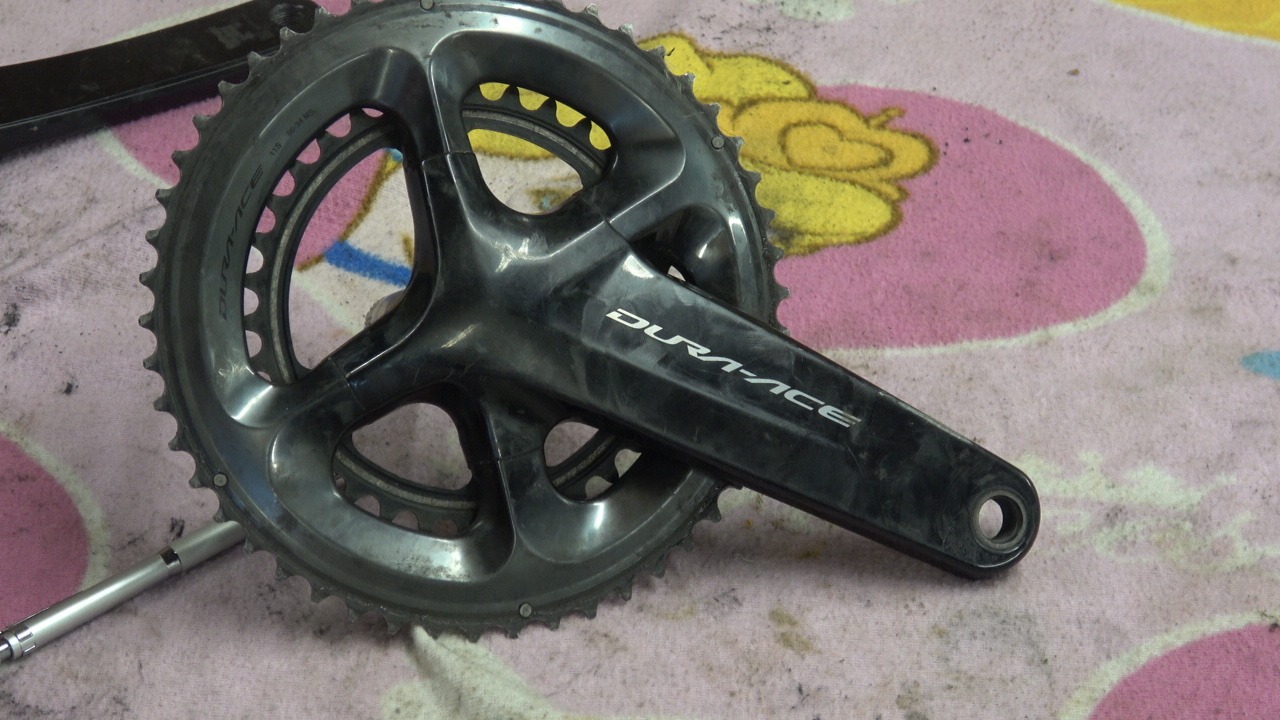
Introduction
Shimano have had some issues with their high end cranksets in recent times. It seems as though the Ultegra and Dura Ace cranksets are the primary units affected. There have been many reports of the cranksets fracturing in half. Some of these have been under modest load on turbo trainers whilst others have been on load. The failures have been so frequent that a dedicated hashtag has emerged (#ThanksShimano).
Background
The Hollowtech naming system is used by Shimano for both their bottom brackets and cranksets and this causes some confusion. For the purposes of this post, the version of Hollowtech in question refers to the cranks.
The failed crankset that this analysis concerns is a Dura Ace 9100 unit. 175mm cranks. Approximately 3.5 years old. The failure occurred in someone with the power output of a shrimp.
The last few generations of Dura Ace and Ultegra cranks have incorporated hollow crank arms and a semi hollow crank arm spider made of aluminum. The drive side spider resembles a clamshell that has been bonded at the interface. Shimano have done this to save weight as there would be a considerable weight penalty for having a solid lump in this area. Additionally, Shimano use a Steel axle. The joint between the Steel axle and Aluminum crank arm is made within the region of the clamshell.
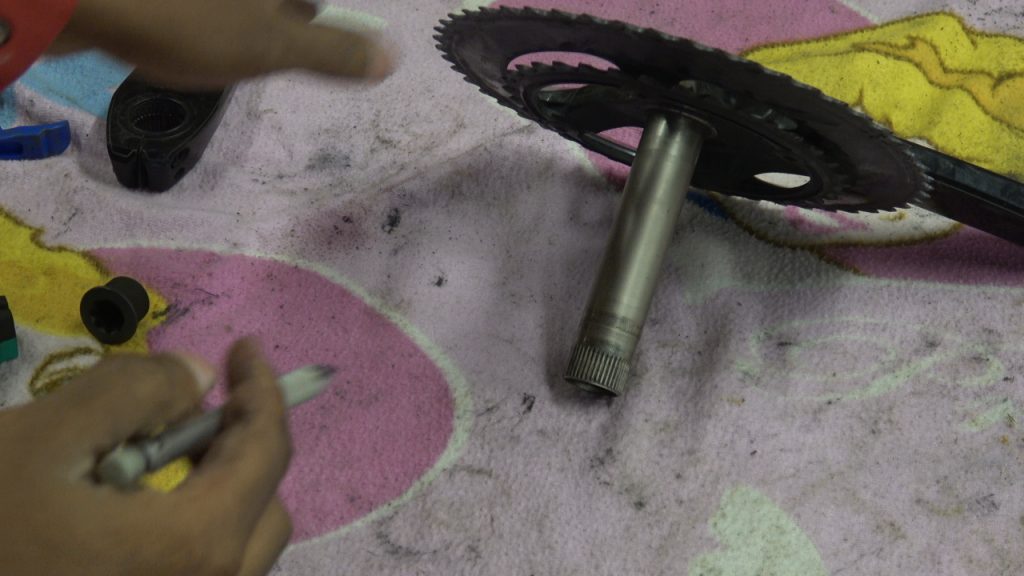
The non drive side has a spline drive with a preload collar for installation and to take up the slack.
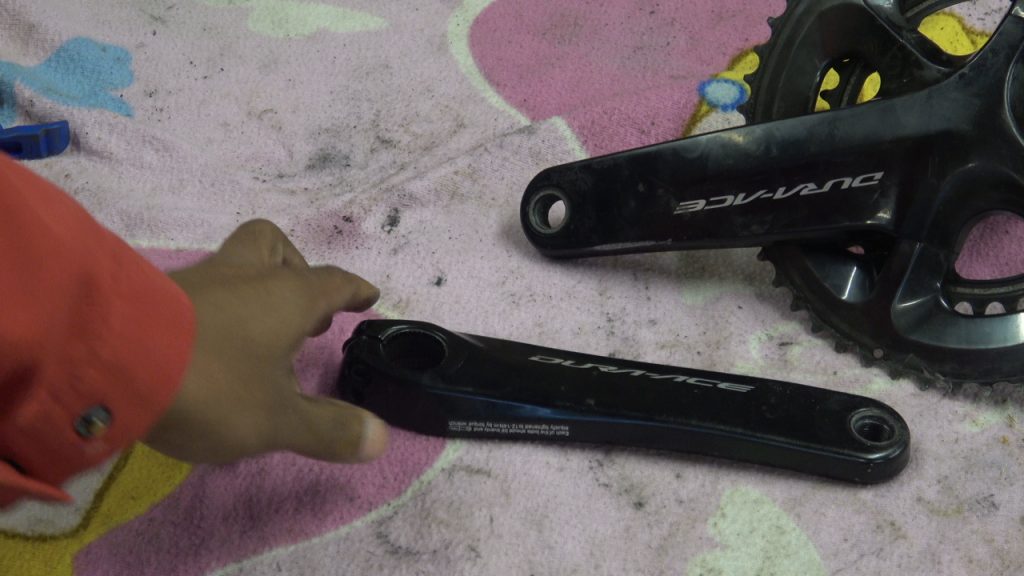
The particular problem manifested itself in two ways. The first was a noticeable creak that was immediately thought to be the bottom bracket (even a threaded hambini bottom bracket) followed by knee pain on the drive side. After further investigation, the knee pain was investigated and traced to excessive ankle movement and video footage of the bike on a turbo trainer showed visible “flexing” of the crank arm. The crank arm was subsequently removed and dry tested and found to be at fault. The failure point was very small physically but had quite a profound impact on performance. A video with the creak is shown below
The UK distributor was contacted and they (Madison) did give the impression they would swap it out and advised contacting the place of purchase. The supplying dealer was contacted – Merlin Cycles. Merlin refused to even go near it, stating the item had gone over it’s warranty period. They also stated they did not get their Shimano supplies via Madison so it begs the question about where exactly they are getting their Shimano parts from.
As the item had no value for a warranty claim and had not completely failed, it was then subjected to engineering analysis.
Mechanism of Failure
The ultimate mode of failure is a break in the joint between the two halves of the crankset but this is the symptom and not the root cause. In the case of this failed example, there is clear evidence of galvanic corrosion and almost all units have failed as a result of some form of corrosion. The aluminum close to the steel joint has corroded excessively.
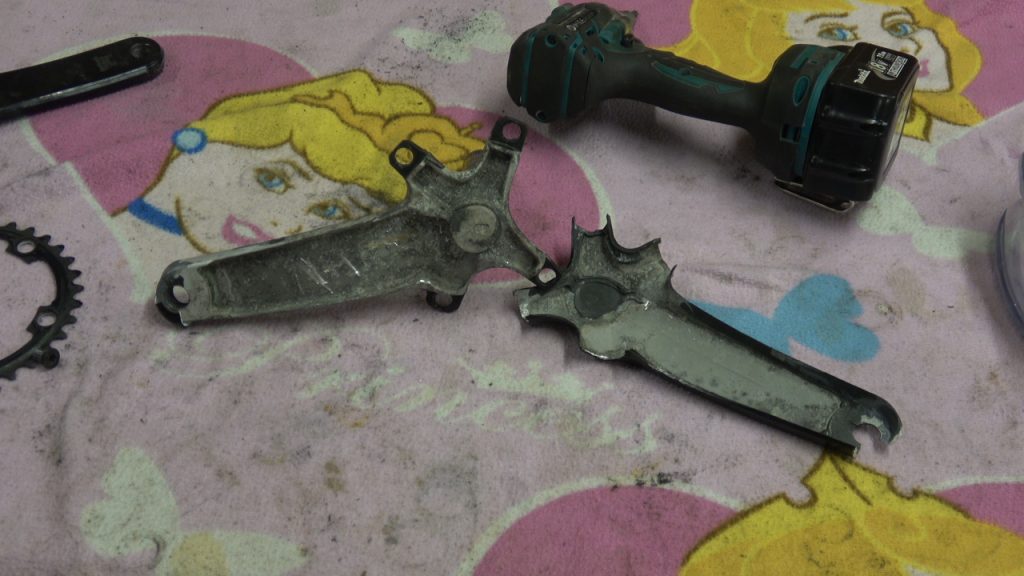
The photograph below shows extensive corrosion on the crank arm spider drive side
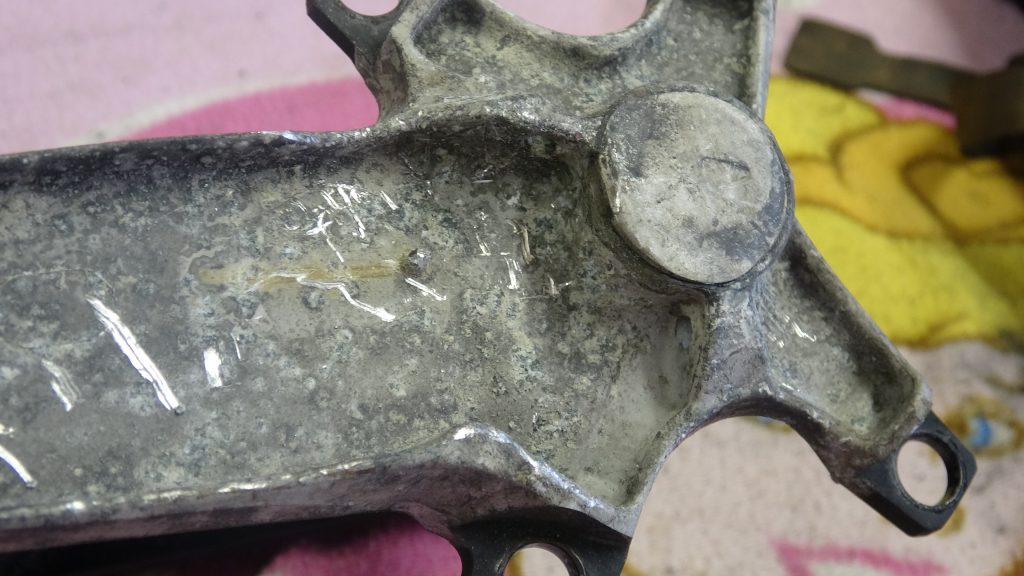
The close clamping style design of the crank also increases the chance of crevice corrosion because it is almost impossible to get a perfect seal between the two surfaces. Flexing under high lateral torque loads is unavoidable and this makes water movement by capillary action of real concern.
Galvanic Corrosion is caused by a movement of ions (battery effect) from the use of dissimilar materials with the presence of an electrolyte (usually water, salt water makes the effect stronger). Steel and Aluminum are of unequal potential. Aluminum which is more anodic than Steel is attacked preferentially and in this usage case almost acts like a sacrificial anode. The more Noble material (Steel) is largely spared. This is shown by the unmarked axles.
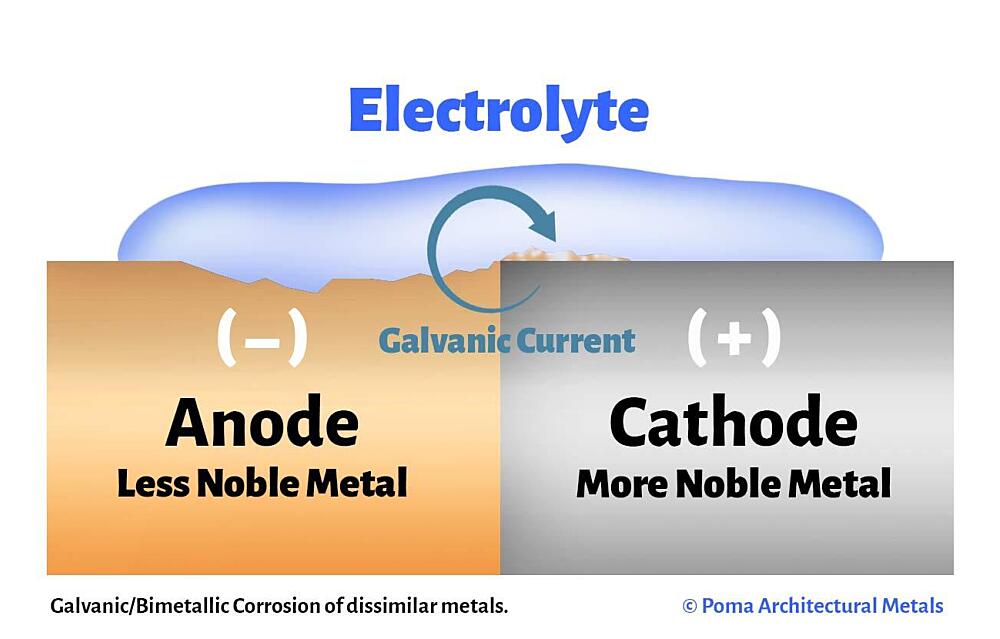
The failure of this type of crankset is a very public display of the problems associated with Galvanic Corrosion but some of these issues are exacerbated by ill thought out decisions by riders. Many riders fit stainless steel bearings and fasteners into their bikes on the premise they will not corrode. They probably do not realise that the fitting of these items into dissimilar metals or anything with galvanic potential will cause the more anodic material to be attacked. Hence fitting stainless steel or even titanium screws into stems that are usually 7075 aluminium will cause that stem to be attacked because the galvanic potential is higher than that of carbon steel. Hole surfaces are usually machined and devoid of any surface coating and in any case the screwing action would probably remove any coating and hence the battery (and corrosion) begins.
Some readers may be asking why Shimano have not simply coated the inside of the crank. The main reasons for that are likely to be cost and the adhesive properties of the glue. Glue of this type of nature tends to have much less shear strength on coated surfaces.
Shimano’s response
Shimano have largely tried to deflect the situation and at least publically deny there is a problem. The closest that anyone seems to have gotten to an official statement is from Ben HIllsdon (Shimano Europe PR) who gave a reply to bikeradar.
“We take our customer’s experiences very seriously – one product problem is one too many as far as we are concerned. So we work hard to make sure our products meet our exacting quality standards before they leave our factories, which is evidenced by the millions of riders having countless miles of problem-free experiences.
“It is difficult to answer your question on patterns of failures because there are so many people globally using our products in different circumstances and in different ways.
“For example, one might assume that climatic conditions (eg weather), a rider’s personal riding style (eg power/weight), or usage conditions (eg a crash) could impact product performance but there is no overall pattern that we have identified to explain why one consumer might have an issue whilst a similar consumer will have a lifetime of riding enjoyment.
“We do treat the problem very seriously though. First of all we recommend that consumers regularly maintain their bikes to spot any potential issues.
“Secondly, we are always studying and learning from our current products to make better products in the future, so feedback like this, even though in this case it was an anomaly that was experienced on an older previous generation model, will undoubtedly contribute towards better products for consumers.
“Finally, we recommend that any consumers experiencing any less-than-perfect Shimano product should take it to their nearest dealer to discuss a solution.”
Ben HIllsdon, Shimano Europe
The above statement is unsurprising. There is no admission of liability and no admission of any problem existing.
Failure Image Gallery
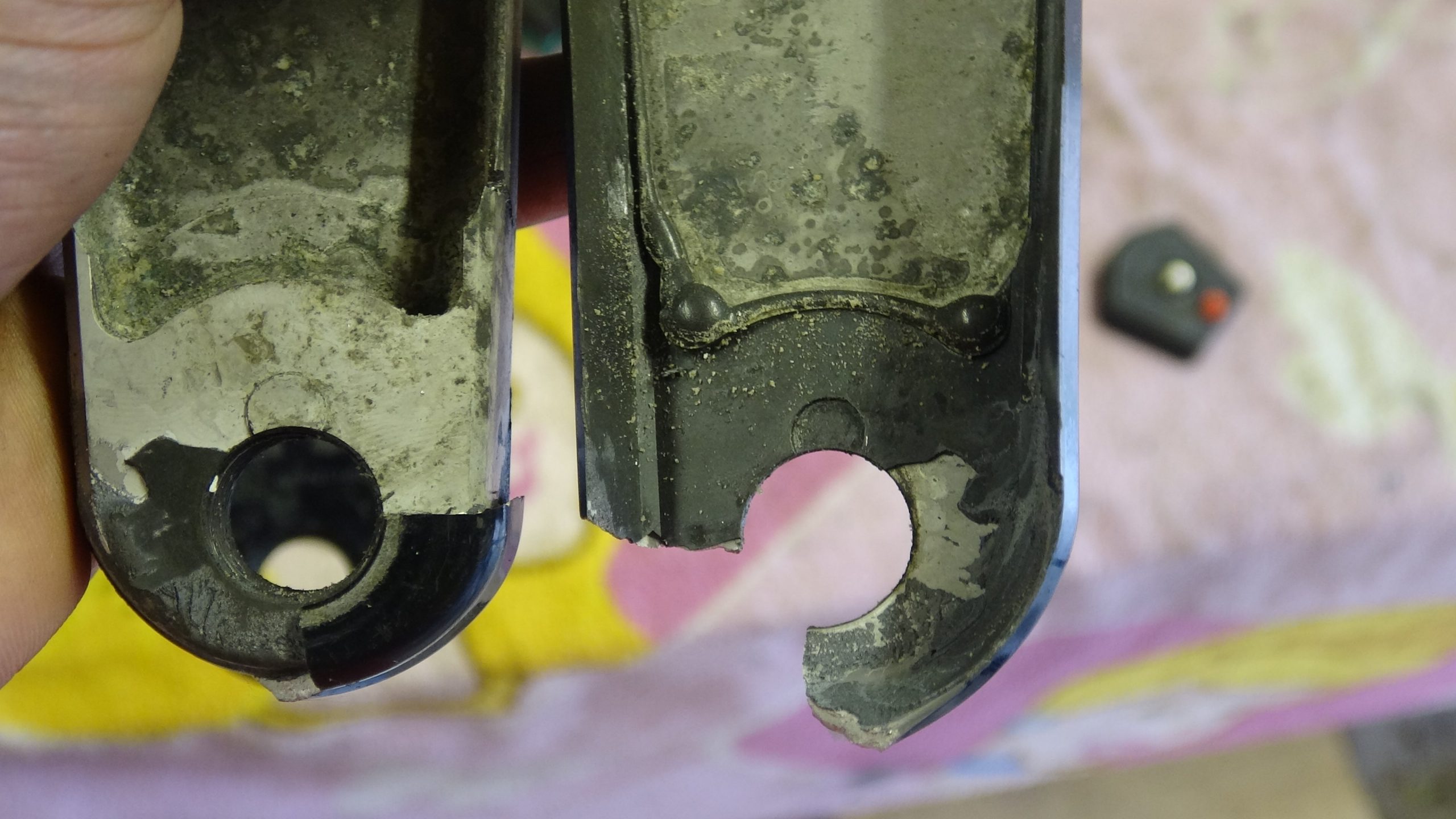
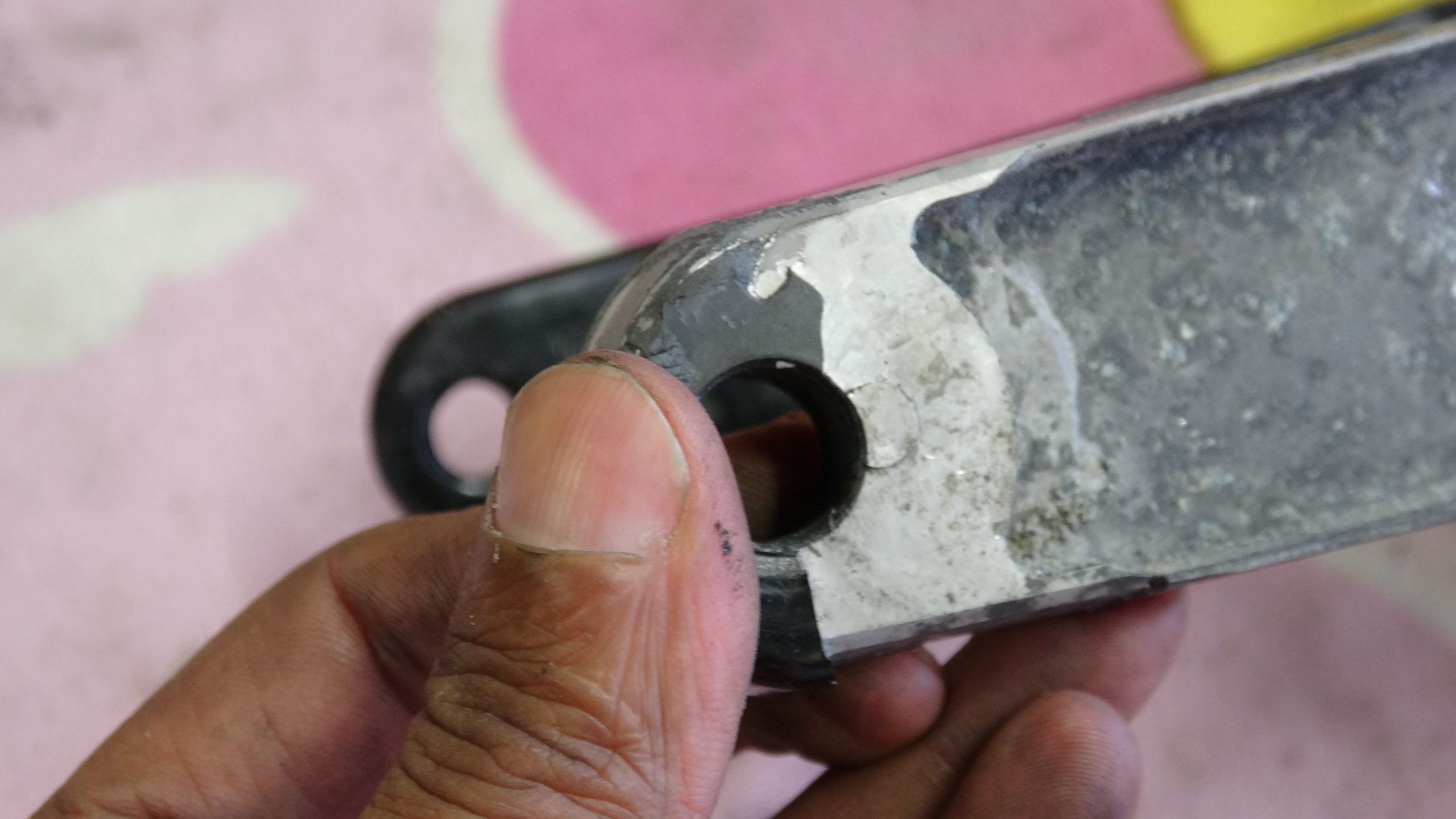
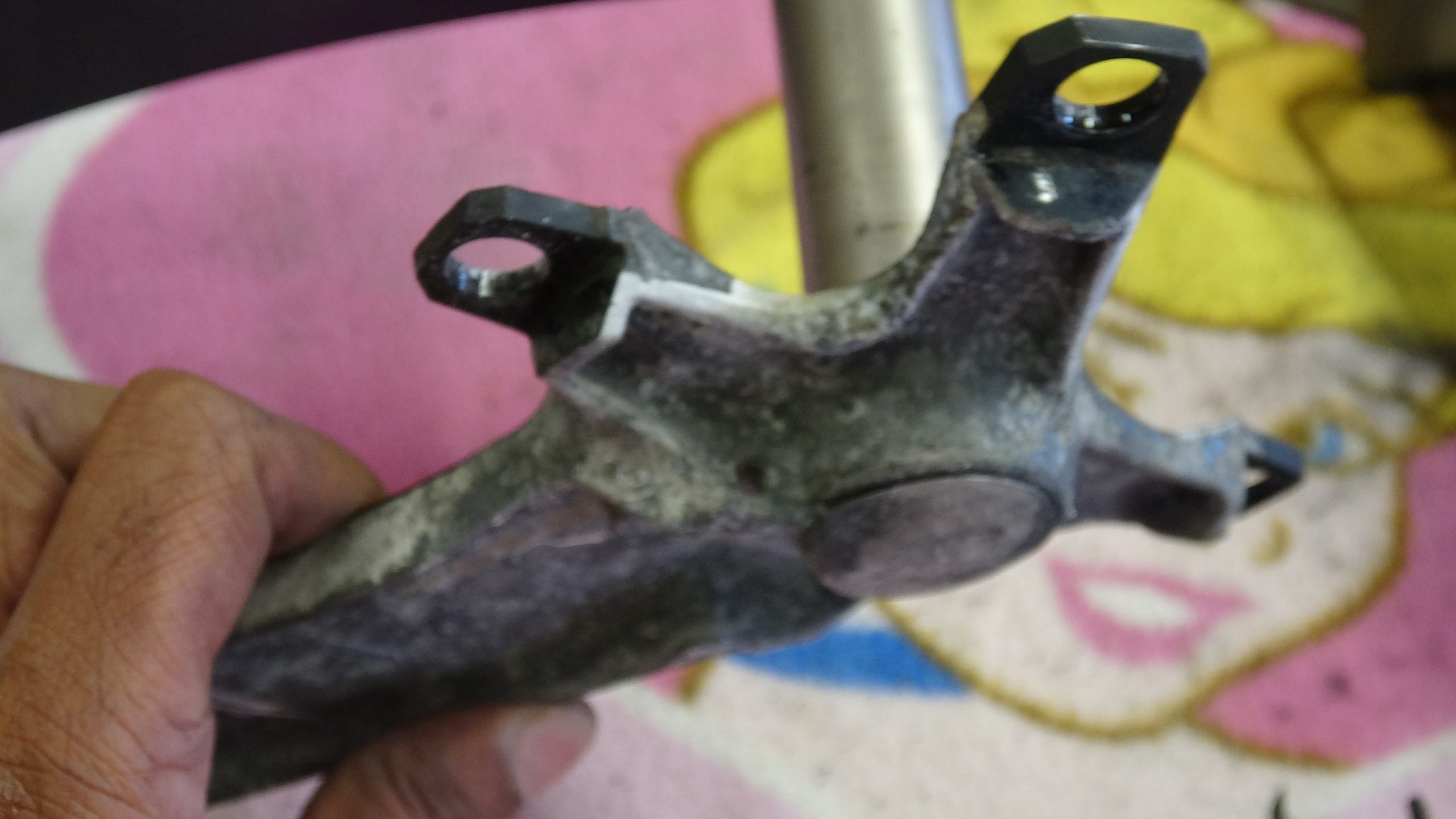
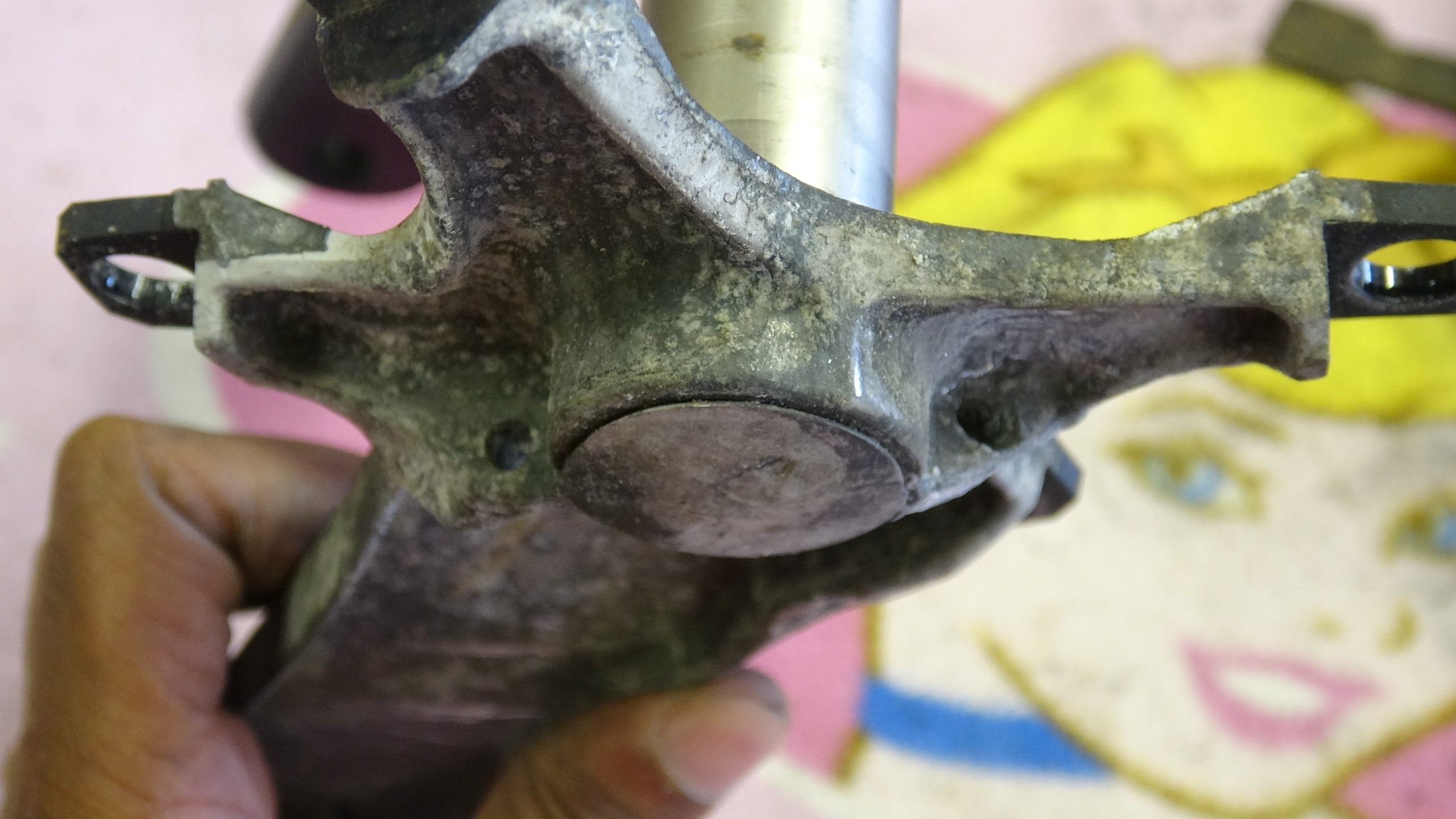
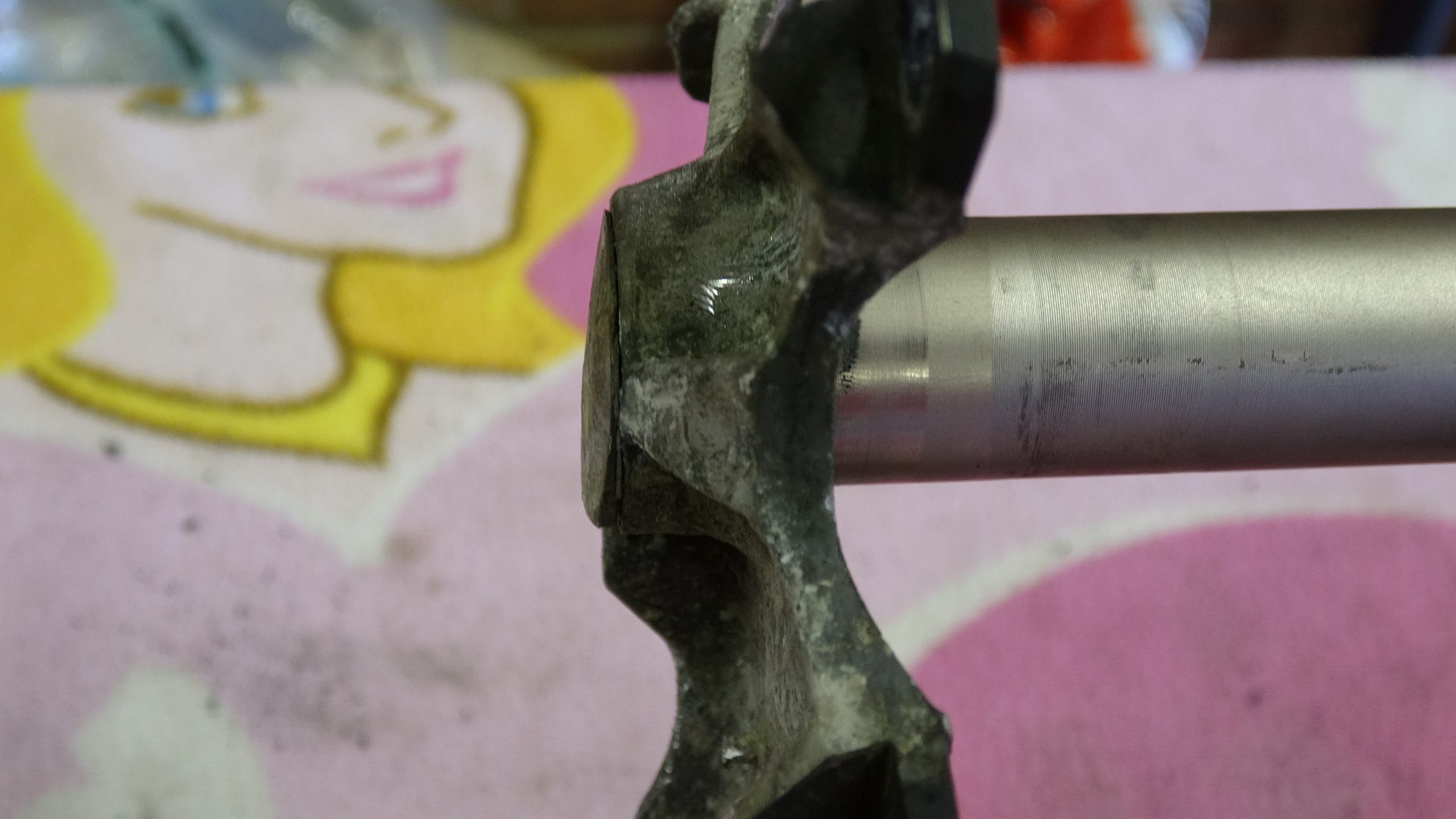
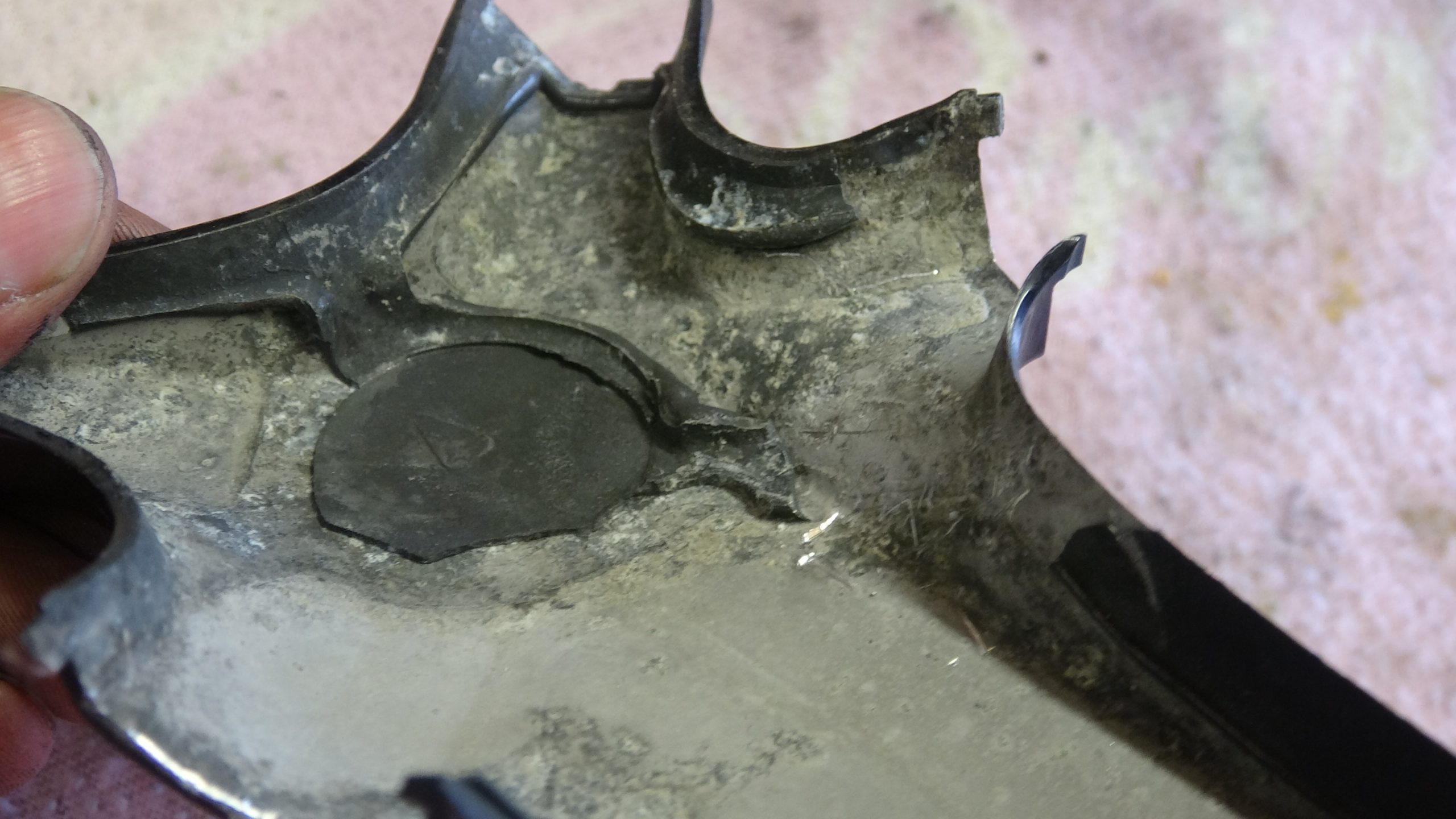
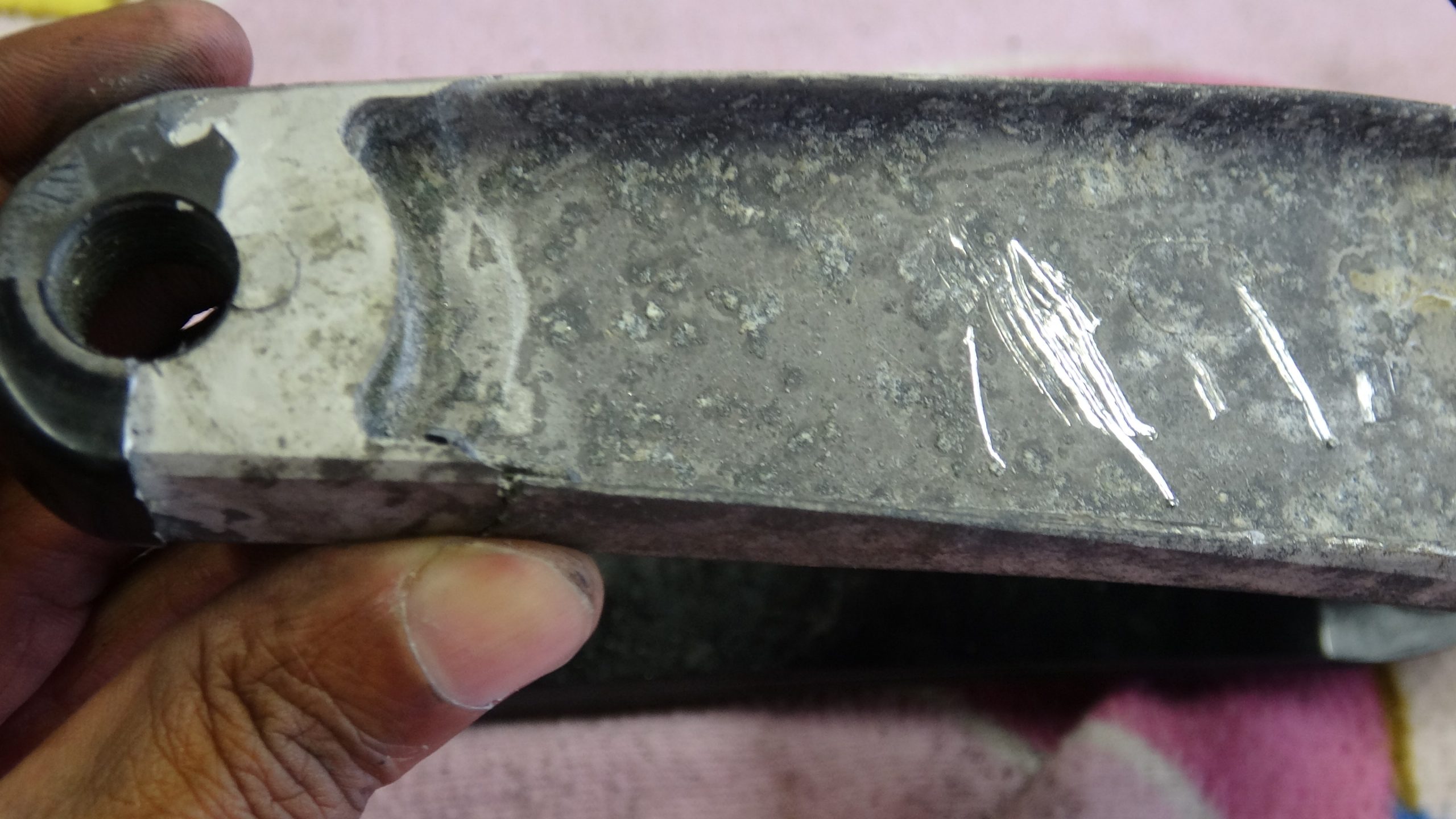
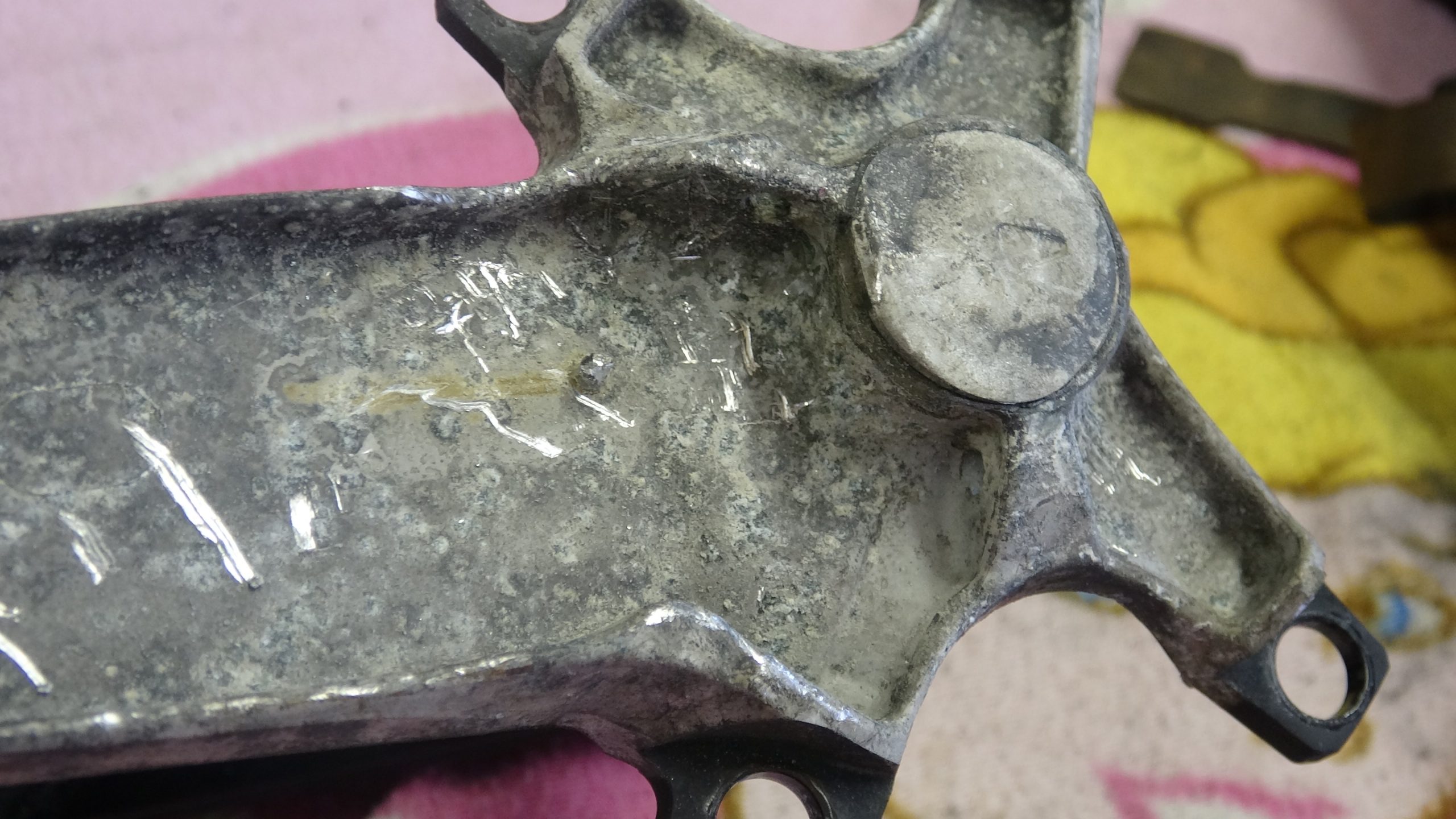
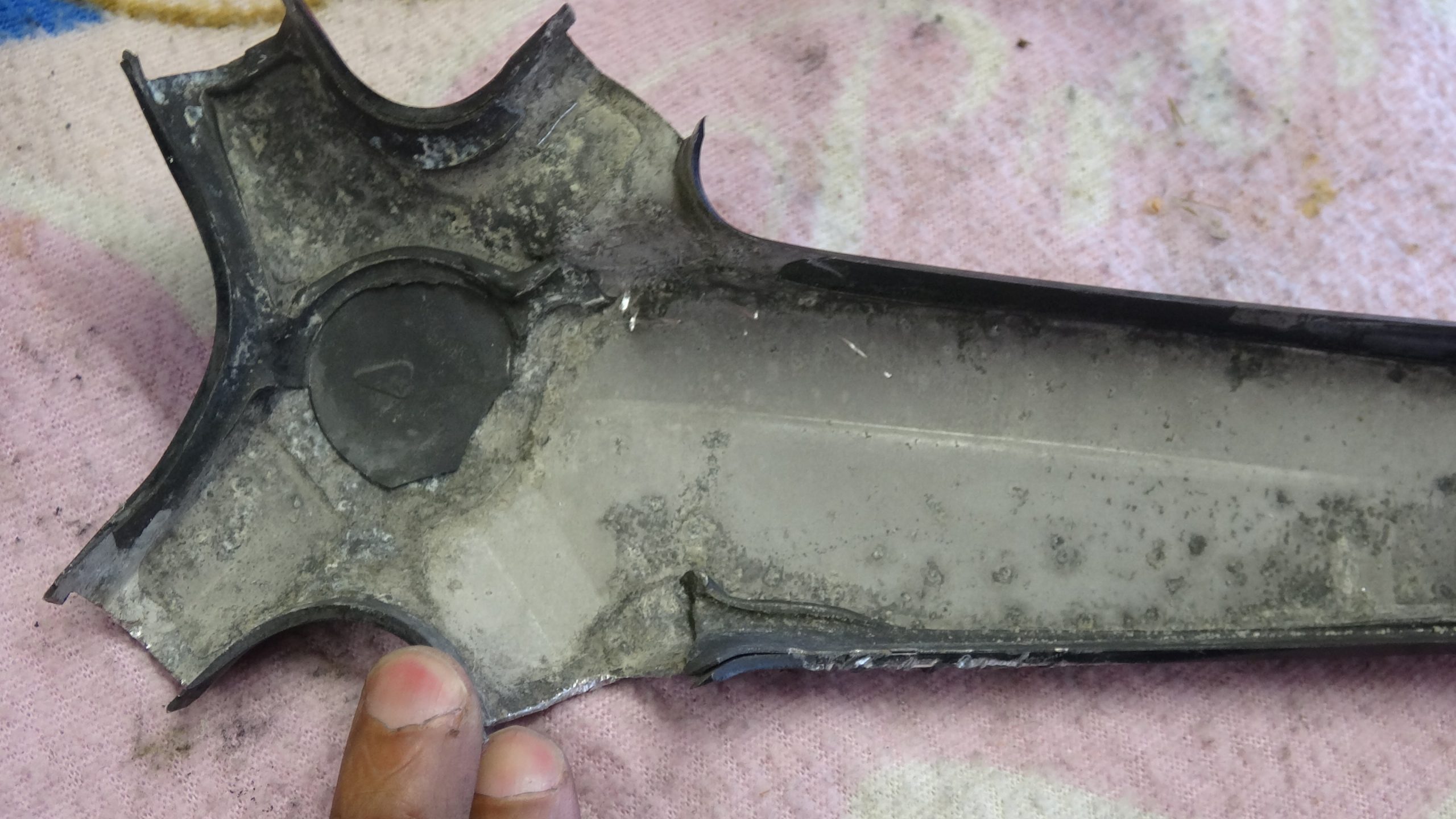
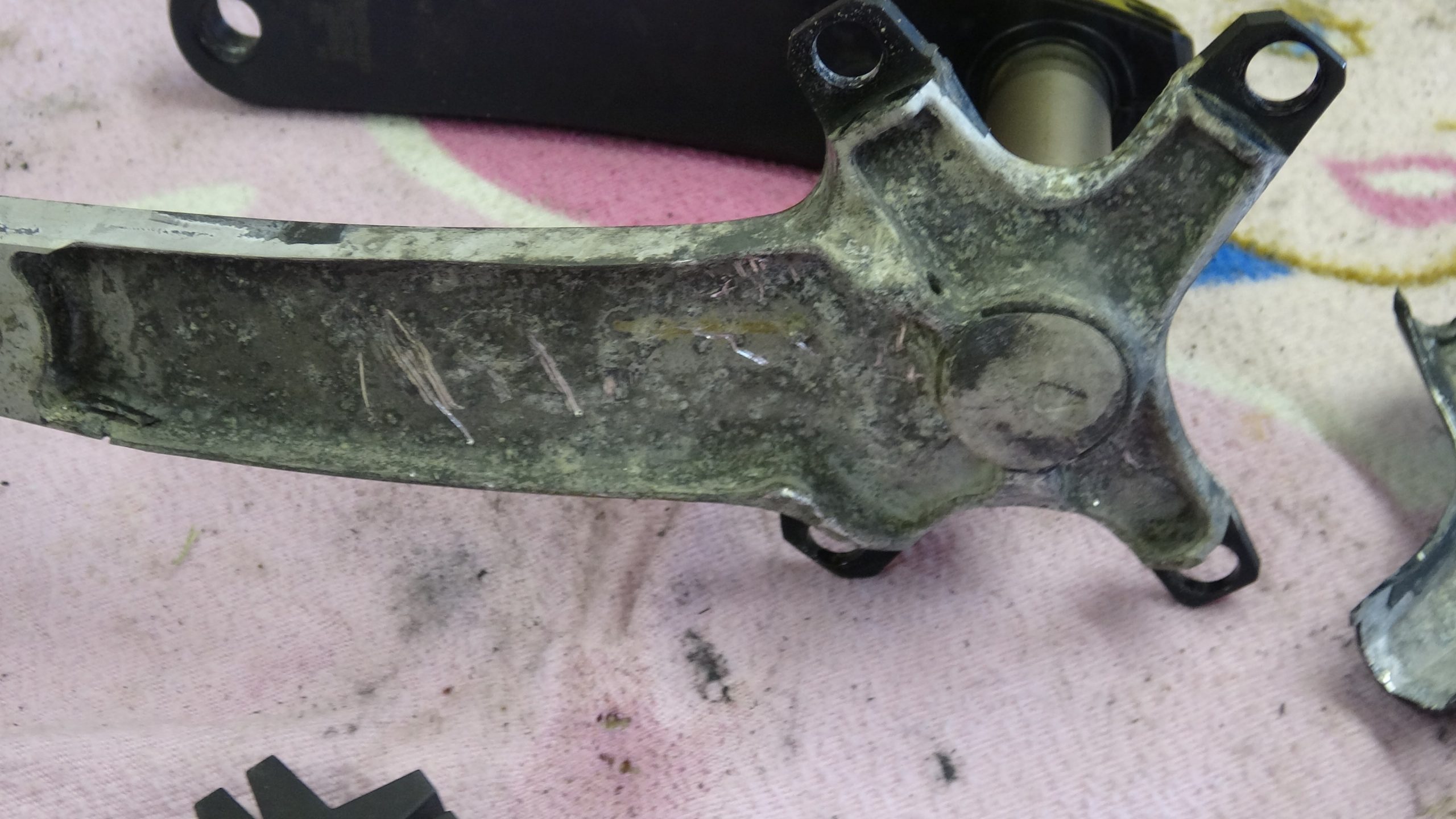
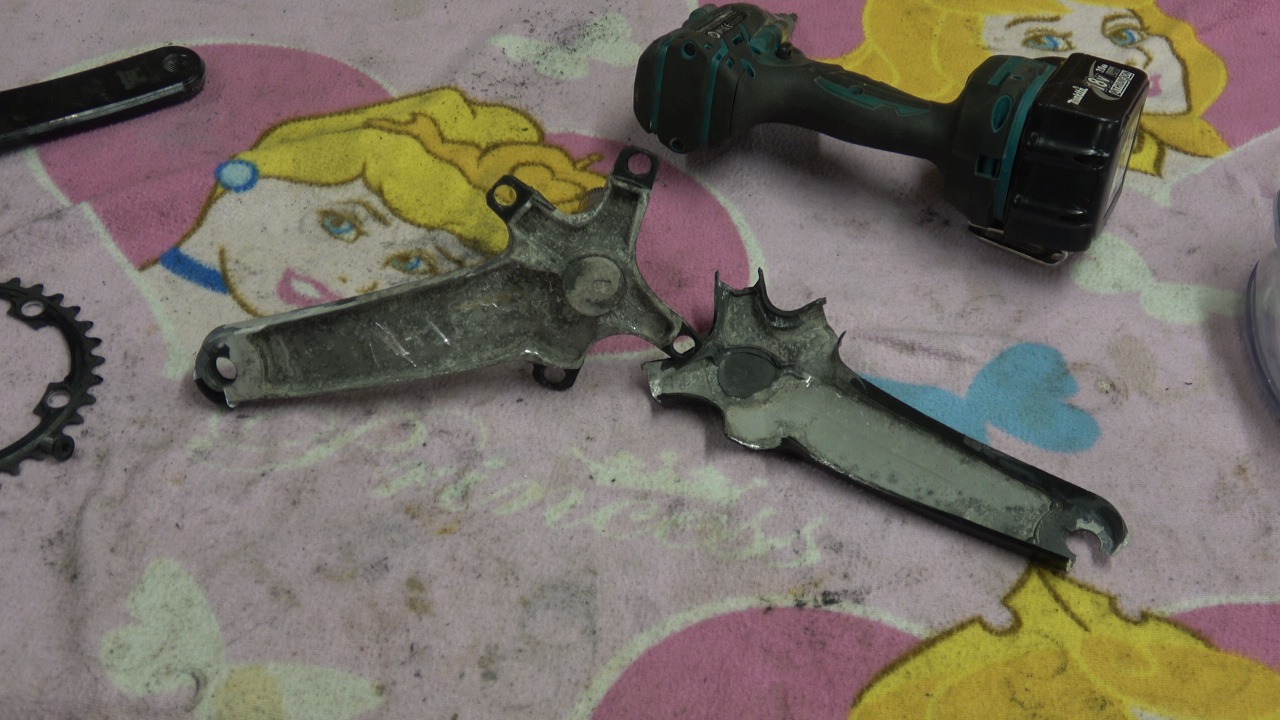
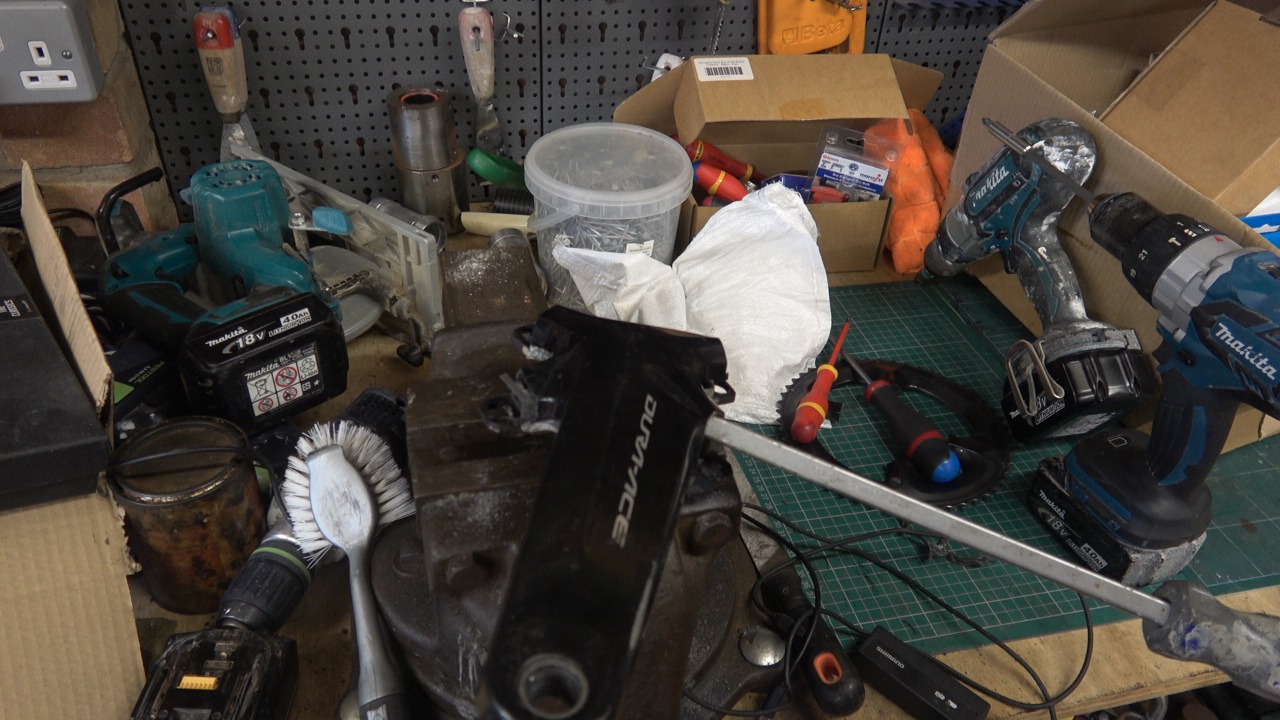
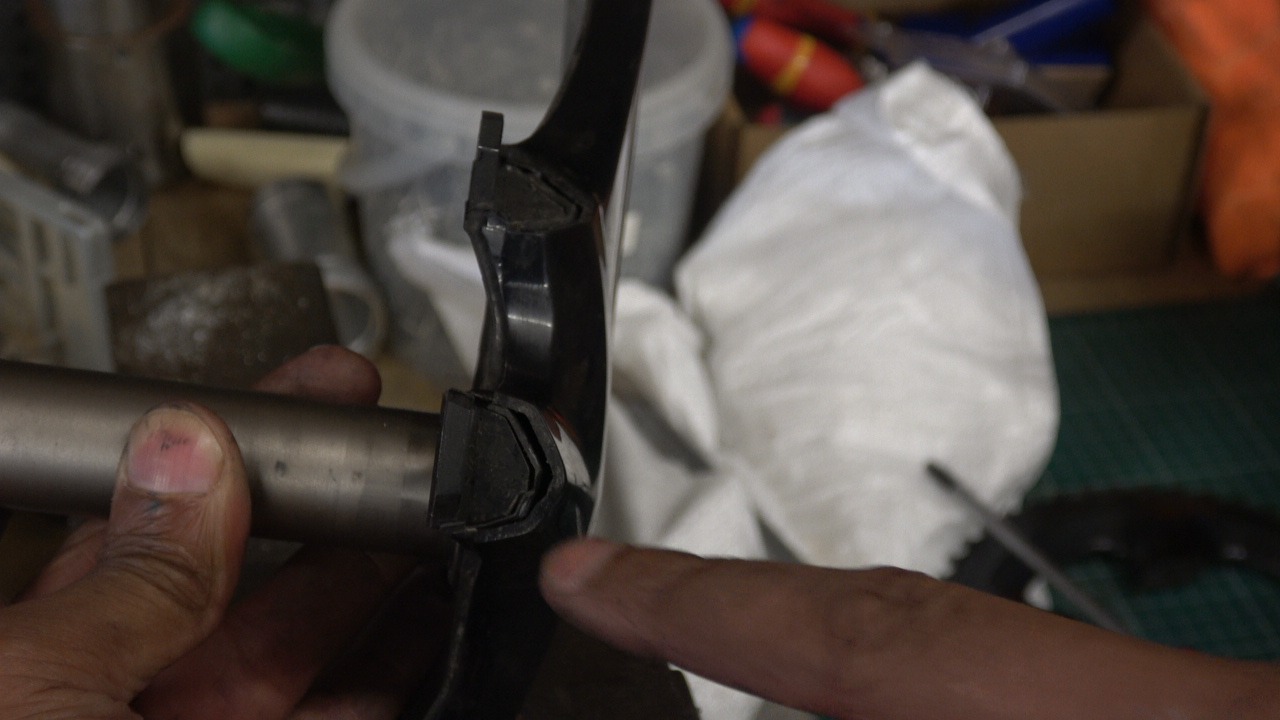
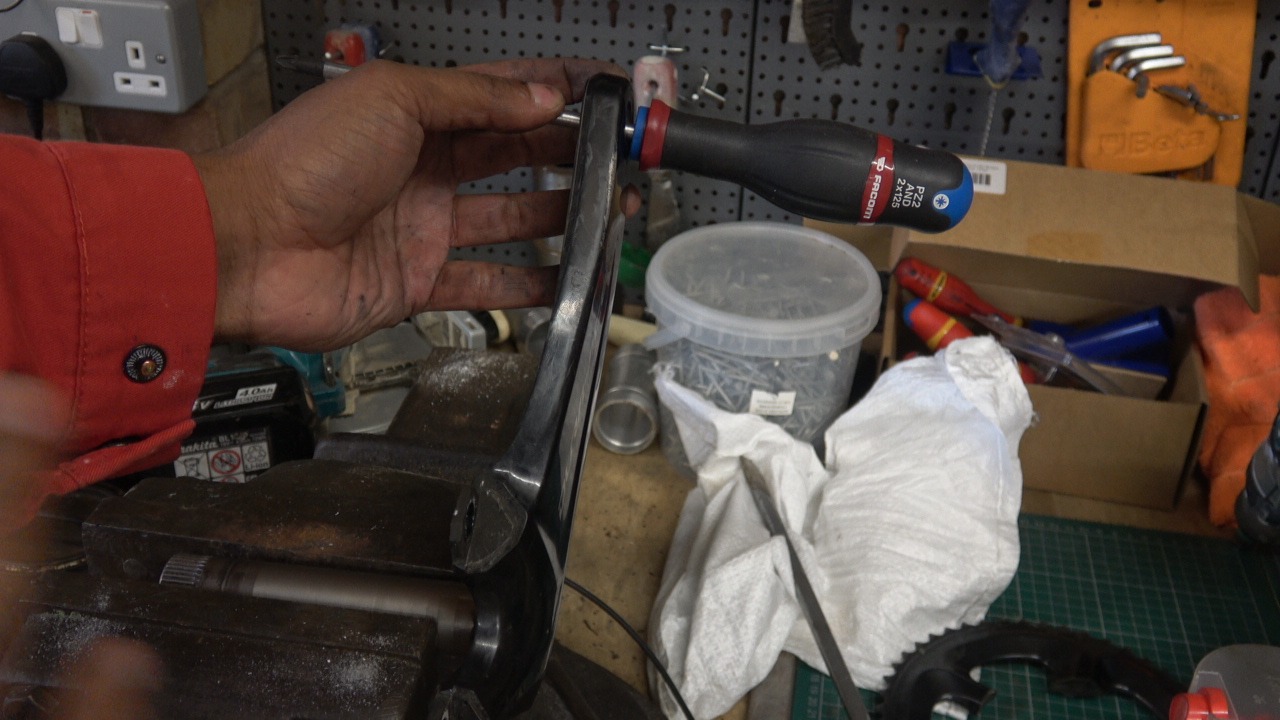
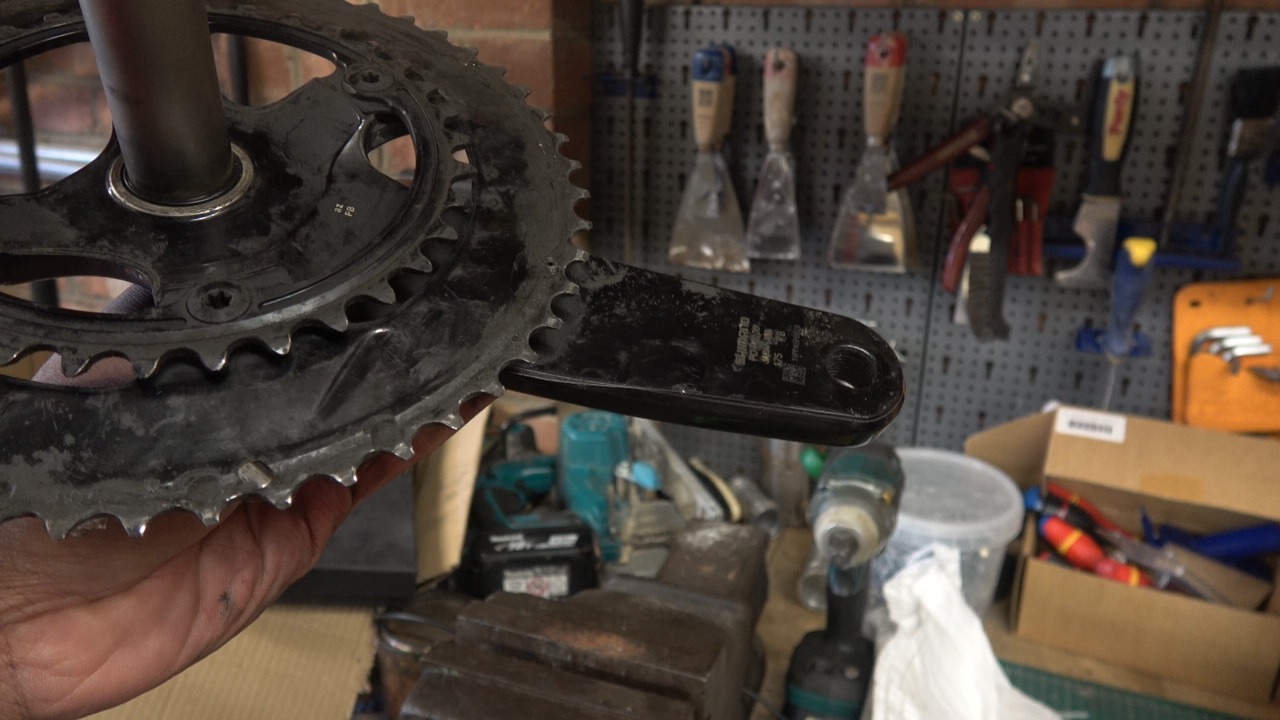
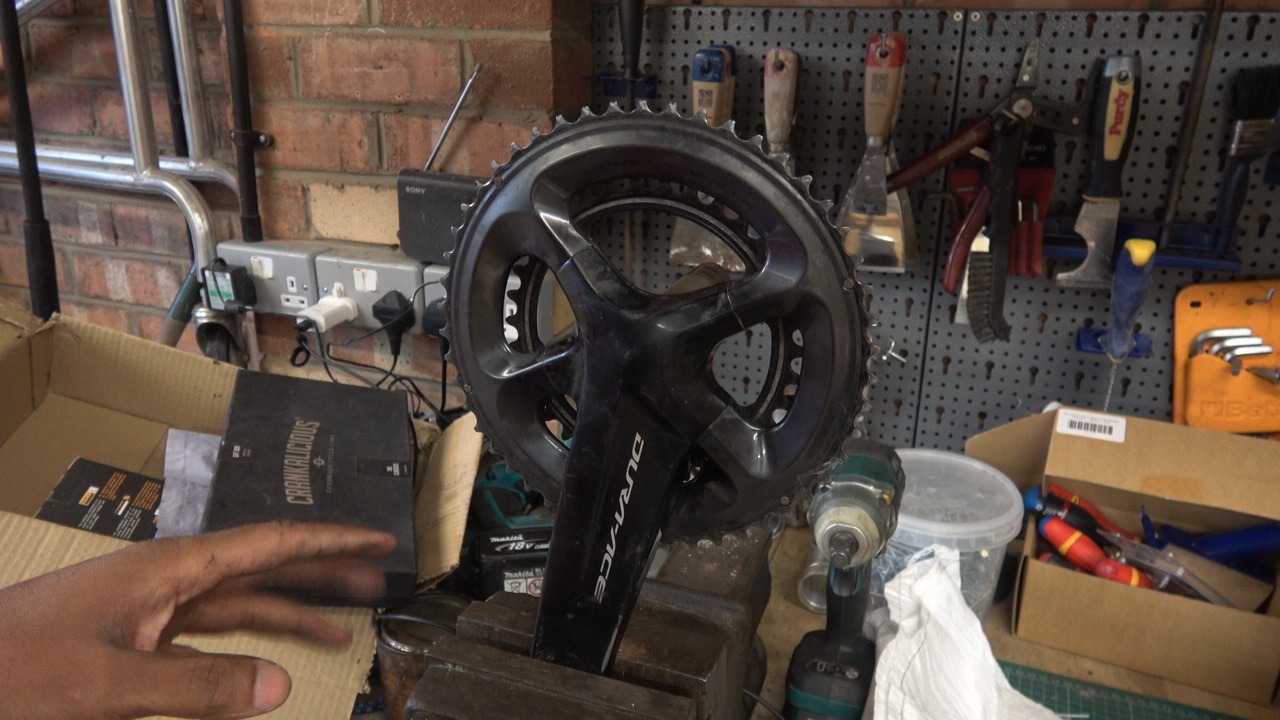

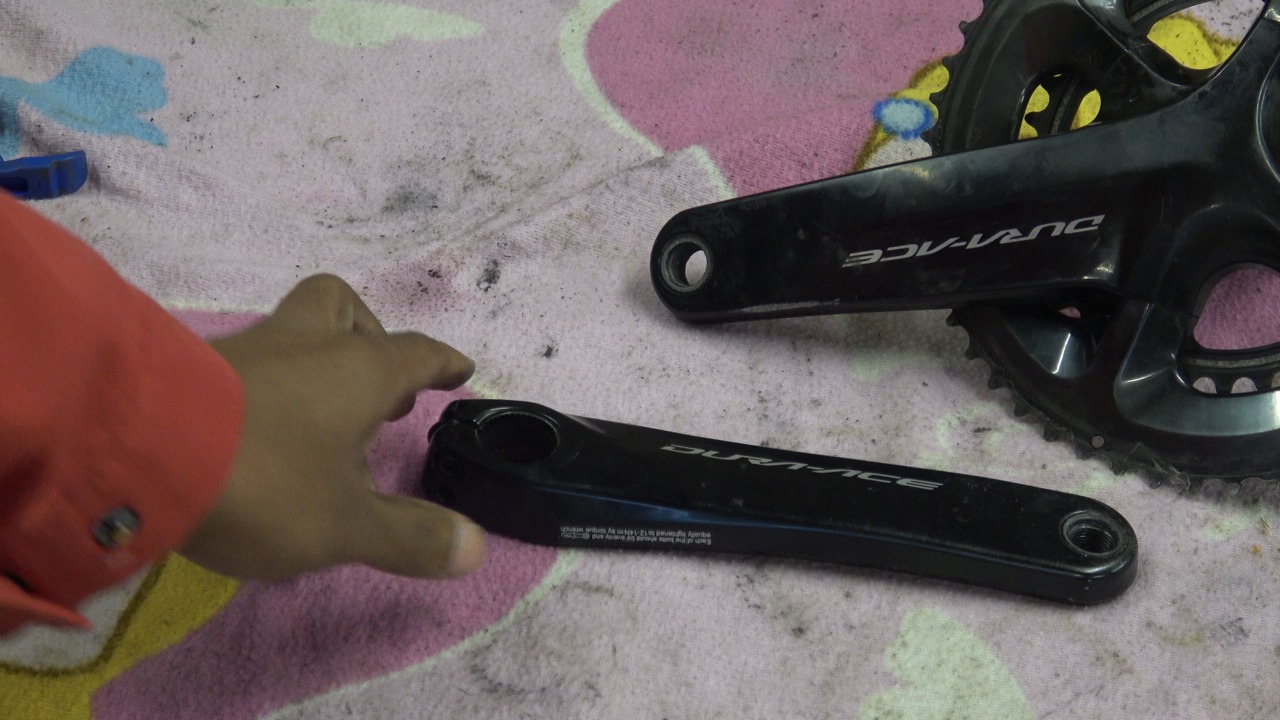
Conclusion
It is highly unlikely that a crank of this design in the field has no onset of corrosion. It would need to be operated in a completely arid environment devoid of any potential electrolyte. If the crank is being used in wet weather conditions, it would likely be prudent to invest in a forged crank such as Shimano 105 or Rotor.
Rotor cranks are forged and have weight reducing machining on the outside of the crank. From a purely torsional perspective this isn’t as good as a complete box section as the Polar Moment of Inertia is lower but it has no joints so in practice it would be easily stiffer than the Dura Ace described in this post.
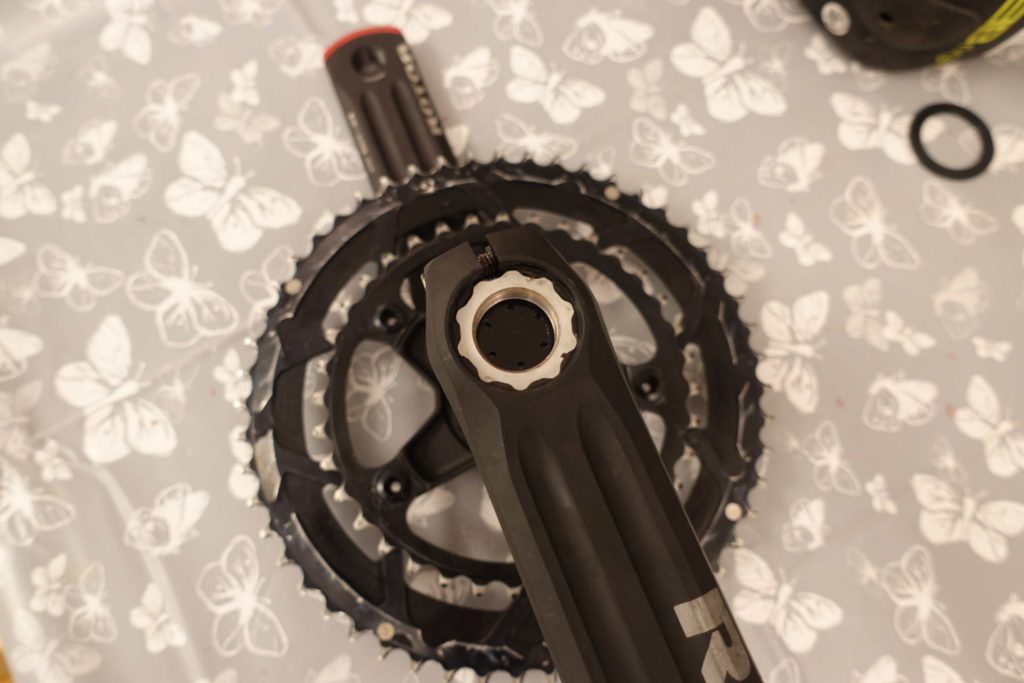
Video Analysis
You can watch the complete breakage, creaking and engineering analysis, complete with sarcastic engineering commentary on YouTube

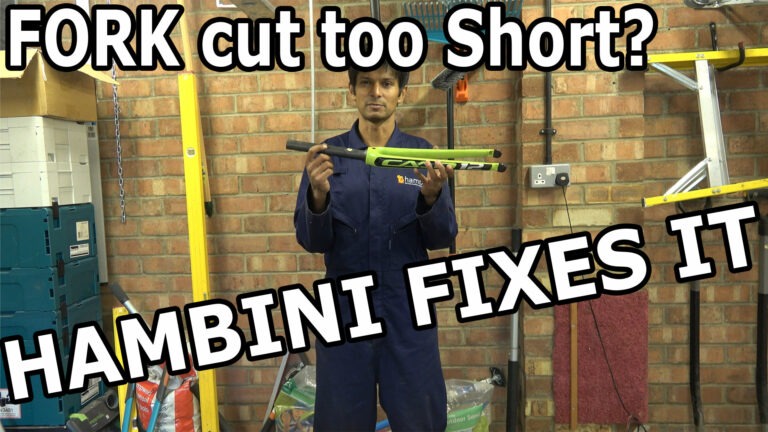
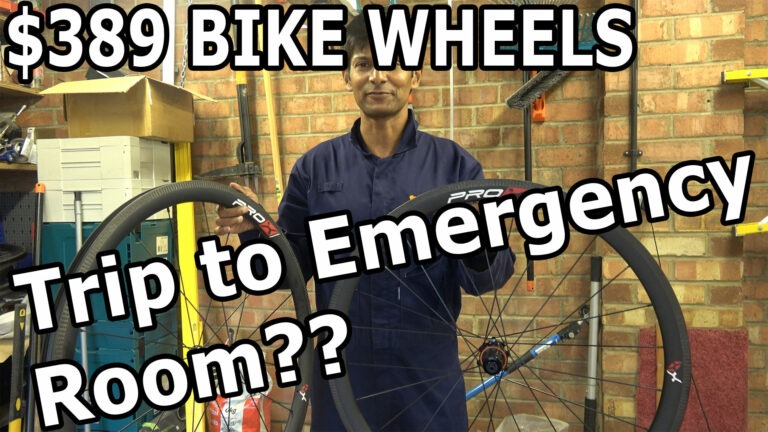
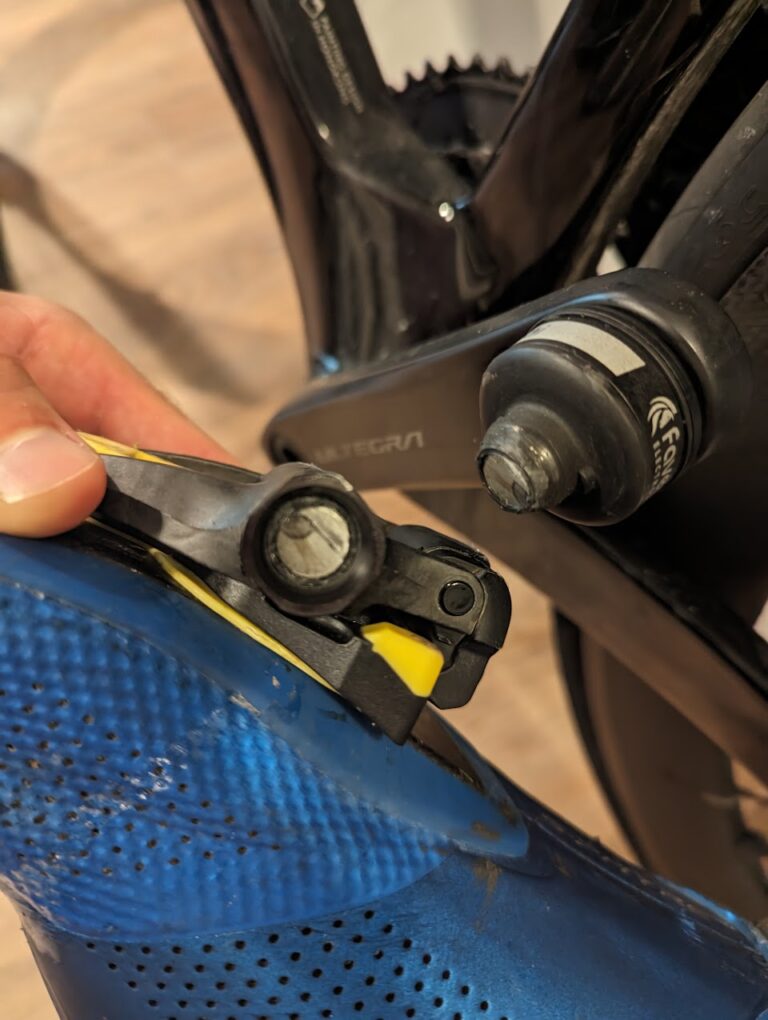
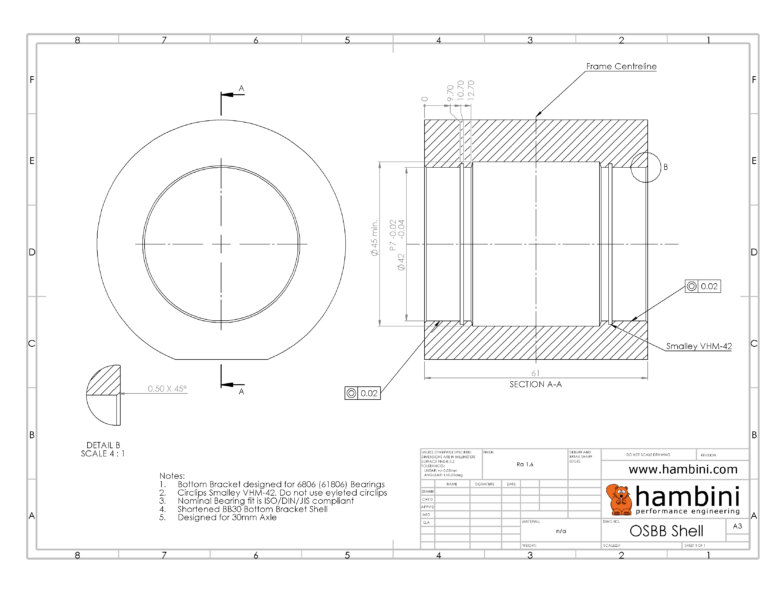

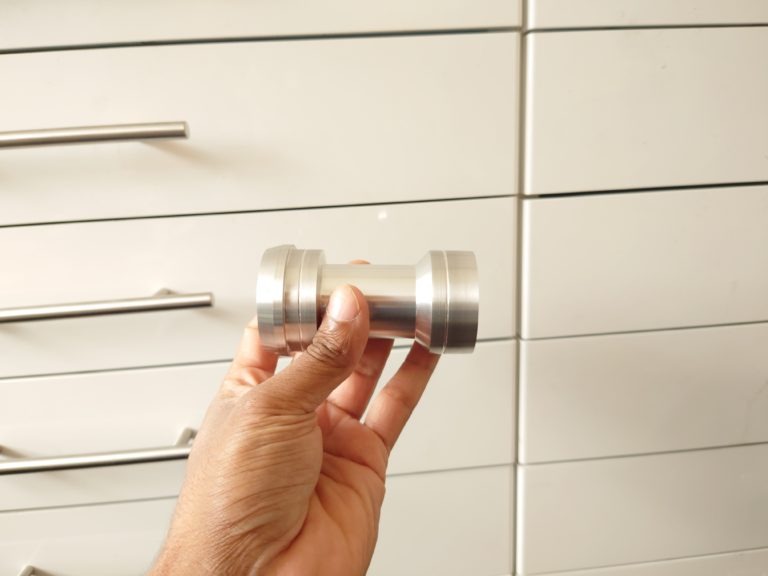
What a disgrace. They need to do a product recall.
Totally agree, the issue of warranty claims is also somewhat dubious.
No, they can pretend everything is OK:
https://www.france24.com/en/20170626-japans-takata-brought-down-faulty-airbag-scandal-files-bankruptcy-0
Hi Hambini, great stuff this. Question on 105: ever since PeakTorque’s YT clip on this I’ve been anxious for this to happen to my 105 R7000 crankset. You state that it is somehow better than Ultegra&D-A; how come? What’s the difference? I thought since it’s also Hollowtech II the construction (bonded Chsections) would be similar. Truth be told, haven’t seen many 105’s fail at #thanksshimano, so I’m curious Thanks again for your bold crusade against shitty manufacturer practices in cycling industry! Loving it
Thanks again for your bold crusade against shitty manufacturer practices in cycling industry! Loving it
Cheers from NL
The general thought is 105 is hollow forged so it does not have a glued joint. Hence whilst you will get the corrosion, it won’t be anything more than on the surface and not a structural member.
Cheers! : )
How does the moisture get in?
The article clearly refers to capillary action – but of course that requires a hole/aperture to the outside. But even then there will be moisture in any part that was manufactured in air – the moisture will condense with temp changes. Unless the parts are made in a purged atmosphere like nitrogen etc.
I know there was a mass problem with 6800 Ultegra cranks – I hope this was nipped with 8000 as I ride one.
I’ve got several bikes running 5703 cranks since about 2017 stored a stones throw from the beach. Not noticed any issue with them.
This something I’ve not seen ,I’m a 30 plus year shop mechanic in Northamrica, I have use these crank for years so have many of my clients. I’m not say it doesn’t happen, but I see how some people take care of there bikes or lack of care, but wondering if other factors like living in coastal regions ,using harsh de Greaseers , or lack of cleaning ,
I’ve been a mechanic for 26 years in the US (DC metro area). I’ve seen maybe 20-30 failures. My experience is that with every one I’ve seen, the bike overall showed signs of extreme corrosion. Front derailleur hardware rusted or covered in white powder corrosion, stem bolts solid rust, seized headsets, absolutely gross handlebar tape. In several occasions, it’s been caught before catastrophic failure. There have been creaking noises, excessive flex, etc. At this point, I have to believe that most people that have had true catastrophic failures were a bit oblivious to the goings on of their bike. Some riders are just like that, pedaling away with creaks and pops and squeaks, derailleur in between gears grinding away, totally content with the world.
That said, I don’t see anyone else’s cranks failing from corrosion, and certainly not with such disastrous results. I saw one Rotor 3D+ crank that started to show cracks, and two Cannondale SiSL2 cranks. I’ve never seen another Rotor with any failure of any kind, but I’ve seen a few SiSL2 cranks with cracking stemming from the spindle interface.
So even though the cause (as I’ve experienced) is from extreme circumstances, I don’t believe the circumstances are THAT extreme, and certainly not in line with Shimano’s goals and overall reputation. After all, the group is Dura Ace, as in the #1 in durability. They should do something real about it.
I’ve seen a few including my own r8000. Mine took alot longer to set in as I’ve had it since 2017 and it never had a explosive failure but it started to disbond in the spider area. I live in a dry desert so I can just imagine long term out look of these cranks doesn’t seem good. My bike has zero other corrosion and spent basically a year plus inside not even getting ridden. Even if the failure rate is only few % inside warranty the fact shimano has ignored this puts a bad taste In my mouth.
I had one Ultrgra R8000 crankset start to tick during 2yr warranty period on a Nashbar CR5-58. The new Ultegra R8000 crankset failed after about 18mo. Shimano should have replaced this one under a recall. I replaced it with a SRAM Red Crankset, and I intend to buy my next bike with SRAM components.
There have been documented cases of Shimano bonded crank failures since 2019-20.
I was made aware of the situation when I spotted a damaged Fuji for sale on Ebay which had been a result of this type of failure with a bonded Shimano crankset.
It can happen to both sides but as you have mentioned mostly the drive-side because of the very sound conclusions you have said… definitely a fail with adhesive because of corrosion.
When I was still doing bike mechanics I emailed all my client base (April 2021) and told them to be aware of the issue especially if they were riding on Dura Ace or Ultegra with these type of crank arms.
I don’t think it’s necessarily just the top end Shimano road cranks either. I have heard of MTB SLX cranks doing the same.
There are 2x you tube links.
1st from 2020: https://www.youtube.com/watch?v=Rj__lexd_BI
2nd from March 2021: https://www.youtube.com/watch?v=FkEkQV-zK0s
Have a perusal.
As you said the lack of culpability or acknowledgement from Shimano is SHOCKING!!!
I had the exact same thing happen to me with Shimano Ultegra 6800. I took it in to the shop asking about a tick when the crank was under pressure and they told be it was a minor adjustment, USD $145. Two days later back to the shop, this time I was told it was the bottom bracket, which was replaced. Twenty miles later, total blowout. Took it back to the shop and they were amazed at aht happened. They said they were sure it was covered under warranty by Shimano. Fourteen days later, bike is still in the shop, according to the wrench, waiting for Shimano rep to contact they regarding a replacement. Not holding my breath. Further research shows this is a prevalent issue with Shimano’s Hollowtech cranksets.
Hi Hambini!
Great analysis! Now I understood what problem I had. Last week I heard some noises like grinding (like in your video) but couldn´t see anything. On the other day I felt a strange movement of my right foot and thought it would be a defective pedal. Then I saw my broken DA 9000 right crank arm.
Thank you! Sadly I already bought two other crankset (used) for this and my other bike. On the Tri-Bike my Vision Trimax Carbon had also a problem on the driveside. The metal threaded part for the pedal got loose from the carbon crankarm. No warranty either…
First, I remember the first 105 Hollowtech to be a hollow forged. But the current 105 incarnation is not change? Quite disagree as I see a similarity of design between 105 and Ultegra of same generation (starting at 5800/6800).
It’s my personal believe that Shimao would do a cheap manufacturing trick by using the same crank design and creation processes between 105/Ultegra. Only make different at outer cosmetic (anodizing/painting) and chain rings.
Second, Rotor 3D crank is not make the weight reducing machining on the outside of the crank, they drill 3 hole along the crank length to save weight thus making a TRUE Hollow design.
Had two Shimano Ultegra cranks fail within 6 months. Both were probably circa 2016. Great tear down / warranty analysis (speaking as an MIMechE & veteran of the auto industry) and failure mode is identical to the video. SRAM or Campag for me next time as Shimano seem indifferent to this well publicised issue.
Probably a stupid question but is there an obvious way moisture gets into these things? I wonder because of the possibility of applying some anti-corrosion spray type stuff through whatever venue the moisture takes to enter to reduce or prevent the slow degradation of this component. I’m interested now that my wife is riding a new bike with this crankset after a lifetime of Campagnolo, which when you try to look up recall/failures turns up pretty much nothing vs the S companies. Thanks!
How does moisture enter the structure? Could an anti-corrosion agent be applied via however moisture enters?
the joint is not perfectly sealed so moisture either condenses in there or possibly capillaries into the cavity.
This doesn’t surprise me. Shimano regards their products as disposable, which is why you can’t get get replacement parts for them. That’s why I won’t buy their products.
After 5y of good use (but always maintained maniacally), my Ultegra R8000 crank also failed on me in quite the same way as most of the other cases. During one ride, the crankset started to make squeaking noises. After inspection, it showed a big crack over the right crank arm, which openend a few mm when putting some leg force on it. As I’m not the most powerful rider, I’m convinced that the logic of slow internal corrosion could well be spot on, otherwise much stronger riders would break them right away. As this seem to happen typically after the warranty is expired, sales guys and manufacturer seem not to worry too much about it. They probably also assume that the squeaking noise will alarm the user to check it before it is to late, so avoiding serious or lethal accidents. And after a lethal accident, it’s probably quite hard to say whether the accident resulted from such a failure anyway. So they just get away with it, and just keep on producing and selling them.
They even keep bringing out new models in this technology (Dura-Ace 12sp FC-R9200). It’s about time Shimano gets some serious competition from the Chinese bike component market!
Anyway, now that I know this, I’ll stay clear from Ultegra crank-sets (and also Dura-Ace, but they are over my budget anyway). For compatibility reasons, I may stay with Shimano 105 though.
I saw Shimano recalled 680,000 cranks just today. The recall lists includes any cranks prior to July 2019, including the new FC-R8000. I have an FC-R8000 from 2021, manufacturing code “TC”. It looks the same as the old ones, what is different about post July 2019 cranks that they aren’t recalled as well. Also, the “inspect and replace if necessary” seems dumb if there is a real problem.
This recall involves Shimano Ultegra FC-6800, Dura-Ace FC-9000, Ultegra FC-R8000, Dura-Ace FC-R9100 and FC-R9100P 11-Speed Bonded Hollowtech Road Cranksets manufactured prior to July 2019 sold individually and on bicycles sold by other manufacturers such as Trek and Specialized. A crankset is the component of the bicycle that the chain and pedals attach to for pedaling. The recalled models have printed ‘Ultegra’ or Dura Ace’ logos on the arm. The affected models are pre-July 2019 production and have the following two letter production code on backside of the crank arm where the pedals are attached: KF, KG, KH, KI, KJ, KK, KL, LA, LB, LC, LD, LE, LF, LG, LH, LI, LJ, LK, LL, MA, MB, MC, MD, ME, MF, MG, MH, MI, MJ, MK, ML, NA, NB, NC, ND, NE, NF, NG, NH, NI, NJ, NK, NL, OA, OB, OC, OD, OE, OF, OG, OH, OI, OJ, OK, OL, PA, PB, PC, PD, PE, PF, PG, PH, PI, PJ, PK, PL, QA, QB, QC, QD, QE, QF, QG, QH, QI, QJ, QK, QL, RA, RB, RC, RD, RE, and RF.
I’m riding on an RG – literally the first of the non-recalled production series. I would very much like to know what makes your crank and my crank better than the earlier recalled set.
Thanks for this information.
Can anyone confirm that 10-speed Cranks are NOT affected by the issue?
I have Ultegra 6750 10 Speed with production code KK (I guess that corresponds to a week?)
Product recall is here! 760,000 effected units…
Thanks for the best insight into this issue I have found since being alerted to it via Shimano’s recall. I have a fleet of bikes that I maintain myself (former pro mech) and three are subject to the recall. Unfortunately, I am an hour from the nearest shop, and I have little confidence that the shop “inspection process” will be any more thorough than my own. Anyone have info on what Shimano is telling dealer mechanics to do for inspection? Hard to imagine there’s anyone being trained on dye penetrant or other NDI techniques. If it’s just a visual (apply torque and counter-torque to the two pedals and look for separation at the bond line), I’d like to know that and do that inspection monthly myself.
Must be some way of getting round it, I wonder if copper coat would work for the deseamler parts, it is used a lot in engineering. Lesser welding the two half could be better option if they are made of the same metal or brazing the the two half as a repair but very iffy on thin parts and you need the right brazing rod if on exists.
Great presentation. I read the total number of recalled cranks at 2.8M with the subset of recorded failures in only North America, being 4519 of 760,000 produced – or 0.6%. Leaving aside salt water climate as a variable, that is likely a statistically reliable sample, which means we’re just getting started i.e., if the .06 distribution IS valid, another 13,000 cranksets will, or already have failed.
Bike shop claims there is no corrosion causing the de-lamination as the steel spindle doesn’t make direct contact with aluminum. First, I won’t take a mechanic’s word on this issue. I asked them what kind of metal is used in the pedal to interface with the crank arm. It wouldn’t be cromosteel would it? Obviously they’ve NEVER had a pedal get stuck due to corrosion.
Hi Hambini
Question for you. Bolts in aluminium components such as stems and seatpost clamps should be aluminium or steel to mitigate galvanic corrosion risk? What about anodized aluminium or chrome or nickel plated steel bolts. Cheerd
Hi Hambini, thanks for the great content and for shedding light on this matter which was pretty much concealed by Shimano for so long. I own a set of DA cranks, it looks and feel fine now and would like to still ride it. Is there a way to prevent the corrosion from happening? Would you recommend it? Thanks.